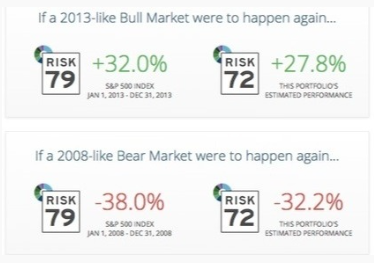K-12 Wealth Report - September
"Compound interest is the eighth wonder of the world. He who understands it, earns it; he who doesn't, pays it." - Albert Einstein
The Markets
In September, the Stock Market continued to decline due to concerns about the Fed's higher interest rates for longer policy. Housing demand remained low, but prices stayed high despite rising mortgage rates. Consumers started to worry as pandemic savings depleted, leading to increased credit card balances for spending. Government uncertainty loomed with a potential October 1, 2023, shutdown.
The S&P 500 had its second consecutive month of losses, dropping 4.87% in September following a 1.77% decline in August. The Dow Jones Industrial Average also declined by 3.50%, lagging behind the S&P 500's year-to-date performance of 11.68%.
The U.S. national debt reached a record USD 33 trillion, posing a risk to its credit rating. Moody's Investor Service warned of a potential downgrade, while Fitch had already reduced the U.S. rating to 'AA+' from 'AAA.' The U.S. 10-year Treasury yield reached 4.68%, a level not seen since October 2007.
Did You Know?
Did you know that the 403(b) retirement savings plan, primarily designed for educators, has a fascinating historical connection to Albert Einstein? In 1948, Einstein was asked to serve on the board of the City College of New York (CCNY). During his tenure, he discovered a peculiarity in the college's pension plan, which allowed professors to defer a portion of their salary into a tax-deferred retirement account. Einstein was so impressed by this concept that he decided to defer a portion of his own salary into the plan, effectively becoming one of the earliest adopters of the 403(b) precursor. His involvement in this financial innovation highlights the enduring significance of 403(b) plans for educators and their unique history.
403(b) vs 457 Plans
As a school district employee, you most likely have a choice to use a 403(b)plan or a 457 plan to save for retirement. So what's the difference between a 403 (b) and a 457 plan? While both serve as valuable tools for educators and other educational professionals, they have unique features and benefits. A 403(b) plan is typically offered by educational and non-profit institutions, allowing employees to save for retirement with pre-tax dollars. On the other hand, a 457 plan is available to governmental employees and some non-profit workers, offering tax-deferred savings. This article will dive deep into the intricacies of these plans, helping you make informed decisions about your financial future.
Stress Test Your Portfolio
"What if ________ occurred? How would it impact my portfolio?"
With Riskalyze, you can get instant insights.
You can stress test your portfolio across different financial market scenarios, providing you with a more comprehensive understanding of their potential effects
Riskalyze employs a Nobel Prize-winning framework to calculate your Risk Number, a quantitative measure that replaces subjective terms like "conservative" and "aggressive." This innovative risk engineering technology aligns your portfolio with your unique risk profile, ensuring that it matches your investment goals and expectations with mathematical precision.
High Yield On Your Savings
Interest Rates have gone up substantially over the past two years, but traditional savings accounts at banks haven't kept pace. They offer lower yields compared to options available at other financial institutions. Consider exploring alternatives like Certificates of Deposit (CDs), Treasury Bonds, and Money Market Accounts to make your money work harder for you. To learn more about these superior savings choices, feel free to reach out to us for a complimentary consultation.
by Ken Ford on October 4, 2023
P.S. Please feel free to forward this commentary to family, friends, or colleagues. If you would like us to add them to the list, please reply to this email with their email address and we will ask for their permission to be added.
This material was created for educational and informational purposes only and is not intended as ERISA, tax, legal or investment advice. If you are seeking professional advice specific to your needs, such advice services must be obtained on your own separate from this educational material.
Investing includes risks, including fluctuating prices and loss of principal. No strategy assures success or protects against loss. All performance referenced is historical and is no guarantee of future results. All indices are unmanaged and may not be invested into directly.
There is no guarantee that a diversified portfolio will enhance overall returns or outperform a non-diversified portfolio. Diversification does not protect against market risk.



